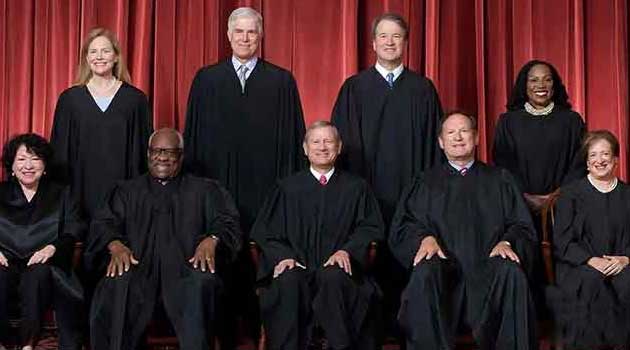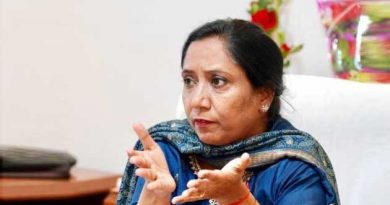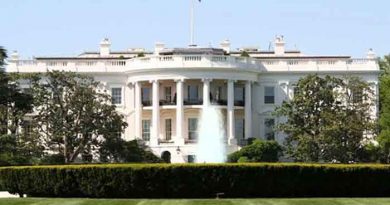Reservations followed Indians to US, now they may get reprieve
 New York: Some Indian immigrants to the US used to say that a reason for coming here was the reservations policy in university admissions and jobs in their homeland and they wanted their children to escape its clutches. But it followed them here in the form of affirmative action in universities and government programmes and threatened to spill over into technology and science jobs.
New York: Some Indian immigrants to the US used to say that a reason for coming here was the reservations policy in university admissions and jobs in their homeland and they wanted their children to escape its clutches. But it followed them here in the form of affirmative action in universities and government programmes and threatened to spill over into technology and science jobs.
The US Supreme Court’s ruling last week in cases involving Harvard and the Univerity of North Carolina that race-based affirmative action programmes violated the Constitution’s provisions on equality of all may give them a reprieve, but risks persist.
The cases were brought by an organisation called Students for Fair Admissions (SFA) primarily on behalf of Asian students with high academic credentials denied admission because of the affirmative action programmes.
Three Indian and two Hindu organisations joined other Asian organisations in filing a brief before the Supreme Court supporting the case because Indians are a part of the Asian demographic.
Explicit racial quotas — similar to the reservations in India — were always illegal in the US and the affirmative action programmes skirted it by using other strategies like awarding almost uniformly low scores for personality factors like “likeability” and being “respected” to Asian students to bring down their rating for admissions, while boosting admissions of others.
Universities justified their action claiming that they wanted a student body more representative of the general population. The Asian groups’ court brief pointed out that admissions counsellors and guides advised Asian students “to hide their identity, to emphasize personal characteristics that avoid Asian stereotypes”.
Vijay Chokalingam, the brother of Hollywood actress and producer Mindy Kaling, exposed how it works.
Challenged by mediocre scores on the medical school entrance test, he modified his name to “JoJo Ingam” and altered his appearance on the photograph with the application in a way to be mistaken for an African-American and found a coveted seat.
The Asian brief said, “in the hierarchy of race, Asian American applicants rank lowest at Harvard”.
But if the Indian hierarchy of castes for reservations were to be applied to the US affirmative programmes, Asians would be considered the “highest”, the Whites as something similar to backward castes and African-Americans, Latinos and Native Americans as the equivalent of scheduled castes.
The affirmative action programmes that sought in effect to limit admissions of Asians also benefitted Whites. And here’s why:
Although most of the rhetoric was about White privilege needing a correctie, in reality, Asian students had to score 140 points more than White students in the Scholastic Aptitude Test (SAT) for admission to elite universities, according to a study by two Princeton University scholars.
SAT, along with another known as ACT, was used to help determine the academic capacbitiies of undergraduate applicants.
The apparent rationale for limiting Asian admissions by Harvard, but not openly admitted, was that they are over-represented:
They are 6.3 per cent of the US population, but make up 27.9 per cent of students admitted to Harvard College, the university’s undergraduate division.
While some supporters view affirmative action as a form of reparation for the history of slavery of African-Americans, and discrimination against them, Latinos and Native Americans, those responsible for it were some Whites.
But Asians were being made to pay the price for it. And that despite Asians also having been discriminated against: In fact, Indians had faced the discrimination of being excluded from immigration under a 1917 legislation till 1964 and those already here were not allowed to own land in California under a 1913 legislation.
Raj Razdan, president of The National Federation of Indian American Associations (NFIA), which was one of the groups that joined in filing the Supreme Court brief, said the ruling “apparently will reward justifiably and proportionately the Indian-American students in America, especially Ivy League colleges for their par excellence academic performances in future”.
Yet Indians and other Asians may not be really safe from the sting of affirmative action even after the court verdict.
The Ivy League universities have dropped the SAT scores requirement, which would would expose race-based discrimination, and will instead be using factors like the socio-economic backgrounds, adversities overcome, including due to discrimination, and personality traits (on which Asians already scored low) in their quest for diversity.
Some of these are subjective and less open to empirical evaluation like SAT scores making them more liable to be manipulated and not seem racially tainted.
Moreover, unlike some Asian groups, Indians have the highest income among ethnic groups in the US and high education levels that would put them at a disadvantage when socio-economic factors are taken into account.
Among Indians, there is a contradiction in attitudes to affirmative action despite its impact on them.
According to a Pew Research Center survey, 60 per cent of Indians say affirmative action is a “good thing” and only 13 per cent that it was a “bad thing”.
This may reflect the Indians’ political leanings: 68 per cent of Indian voters are supporters of the Democratic Party and nearly the same percentage of Indians were supportive of affirmative action.
While overall 50 per cent of Americans “disapprove” affirmative action and only 33 per cent “approve”, 50 per cent of Democrats or party supporters approve, according to Pew.
Thomas Abraham, chairman of the Global Organisation of People of Indian Origin (GOPIO) which also joined the Asian brief against affirmative action, reflected on the “need for diversity. “
“We didn’t want the whole affirmative action to go away, but at the same time, we didn’t want Asian Americans to be discriminated in the general quota of admissions. We hope that the universities can achieve both,” he said.
The over-representation of Asians in coveted educational and employment opportunities has drawn the ire of social justice groups and activists, although they avoid directly speaking of them and often make it appear directed against Whites.
It starts at the level of advanced programmes for school children and is now creeping towards tech jobs, where Indians and other Asians are disproportionally represented — for example nearly 45 per cent of Google employees, in contrast to African-Americans who made up 5.3 per cent despite being 13.6 per cent of the population.
Because of the criticism of the social justice groups that has been taken up by Democratic Party politicians, companies like Google, Meta, Microsoft and Apple have committed to increasing the hiring of other minorities.
They filed briefs in the Supreme Court supporting affirmative action and against the SFA case.
Now they may face a legal minefield in how they frame their diversity programmes.


